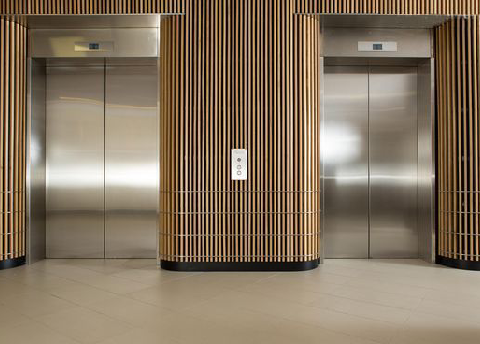Commercial lifts include passenger lifts for transporting people in buildings like offices and hotels, freight lifts for heavy goods in warehouses and factories, service lifts for small items in restaurants and hospitals, and hospital lifts for beds and medical equipment in healthcare facilities. Each type serves specific needs, ensuring efficiency and accessibility in various commercial settings.
Types of Commercial Lifts and Their Uses
1. Passenger Lifts
- Description: Passenger lifts are the most common type of lift found in commercial buildings. They are designed to transport people between floors.
- Uses: Ideal for office buildings, shopping centers, hotels, hospitals, and residential apartments.
2. Freight Lifts
- Description: Freight lifts, also known as goods lifts, are designed to carry heavy loads and goods. They have a robust construction to handle substantial weight.
- Uses: Commonly used in warehouses, factories, retail stores, and industrial buildings.
3. Service Lifts
- Description: Smaller lifts designed for carrying items rather than people. They are often referred to as dumbwaiters.
- Uses: Ideal for restaurants, hotels, libraries, and hospitals for transporting food, laundry, documents, or small equipment.
4. Vehicle Lifts
- Description: Designed to transport vehicles between different levels. These lifts can handle heavy loads and have specific safety features for vehicles.
- Uses: Common in multi-story car parks, car showrooms, and repair shops.
5. Hospital Lifts
- Description: Specially designed lifts that can accommodate hospital beds, stretchers, and medical equipment. They have smooth and quiet operation to ensure patient comfort.
- Uses: Essential in hospitals, clinics, and healthcare facilities.
6. Panoramic Lifts
- Description: Glass-walled lifts that offer a panoramic view of the building’s interior or exterior. They are designed to be visually appealing.
- Uses: Often found in high-end commercial buildings, hotels, and tourist attractions.
7. Stair Lifts
- Description: A type of lift designed to carry people up and down stairs. It consists of a seat that moves along a rail fixed to the stairs.
- Uses: Common in buildings that need to provide accessibility for individuals with mobility issues, such as elder care facilities and small multi-level businesses.
8. Platform Lifts
- Description: These are open lifts without a cabin, typically used to transport people with disabilities or heavy items over short distances.
- Uses: Suitable for public buildings, offices, and retail environments where accessibility is a priority.
9. Hydraulic Lifts
- Description: These lifts operate using a hydraulic mechanism. They are known for their strength and are suitable for low-rise buildings.
- Uses: Common in buildings with less than six floors, such as shopping centers, small office buildings, and residential complexes.
10. Traction Lifts
- Description: Operate using ropes and counterweights, and are powered by electric motors. These lifts are faster and suitable for high-rise buildings.
- Uses: Ideal for high-rise office buildings, hotels, and skyscrapers.
Choosing the Right Lift
When selecting a commercial lift, consider the following factors:
- Building Type and Usage: The nature of the building and the traffic it experiences.
- Capacity and Size: The weight and volume the lift needs to handle.
- Speed: Required travel speed based on the building height.
- Safety Features: Essential for ensuring passenger and load safety.
- Cost and Maintenance: Initial installation cost and long-term maintenance.
Tags:


